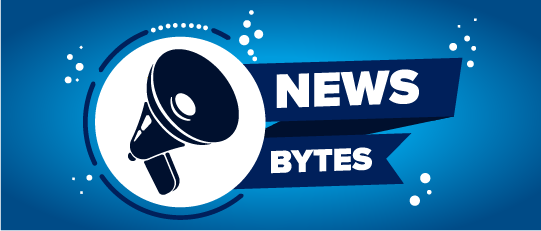For WorldatWork Members
- Getting Benefits Enrollment Right: Big Trends Spark Fresh Strategies, Workspan Magazine article
- 5 Ways You Can Reduce Workers’ Open Enrollment Regret, Workspan Daily Plus+ article
- Benefit Document Builder, tool
For Everyone
- Most of Your Workers Will Likely Regret Their Open Enrollment Choices, Workspan Daily article
- Open Enrollment Is an Opportunity for Education and Engagement, Workspan Daily article
- Strategic Communication in Employee Benefits, course
- Total Rewards ’25, conference
When it comes to employees selecting their healthcare coverage benefits, there is good news and bad news. This is according to a recent Consumer Engagement in Health Care Survey (CEHCS) produced by the Employee Benefit Research Institute (EBRI) and Greenwald Research.
Access a bonus Workspan Daily Plus+ article on this subject:
The report, based on a poll of 2,011 privately insured U.S. adults aged 21 to 64 years old, found that most working Americans had a solid understanding of coverage basics, such as premiums (86%) and deductibles (82%). However, an ongoing state of confusion exists about health plan features. For example, the report stated just 1 in 4 plan enrollees understood the cost amount was not the same for all groups of drugs and out-of-pocket maximums.
According to Paul Fronstin, the director of health benefits research at EBRI, the report may encourage employers to provide more resources for employees, especially since the findings showed half of plan buyers spent less than an hour selecting their health plans — with 3 in 10 spending less than 30 minutes.
“Workers are going to know what their basic premium is regardless of whether or not they use healthcare services, but they may not be paying attention to plan design features such as prescription drug copays until they need to fill a prescription,” Fronstin said.
He noted employers have an opportunity to provide more education and information to workers during open enrollment — and beyond.
“It would be helpful if employers provided education on health coverage throughout the entire year,” Fronstin said.
Areas of Improvement
There are some key reasons why employees don’t spend much time making health coverage decisions, Fronstin said. One of those is that most employees are healthy and don’t frequently use healthcare benefits. He cited the classic “80/20 rule” (also known as the Pareto Principle), where, in this case, 80% of healthcare services are generally consumed by only 20% of the population.
As a result, Fronstin said, it’s easy for participants to simply re-enroll in the plan in which they’re already enrolled, and it’s not until later that they may discover it’s not the best plan for their specific situation.
If there is a lack of knowledge, Fronstin said, employees may spend more out of pocket on healthcare services than they otherwise anticipated (or needed). Workers also may spend more on premiums than required, and they may choose a plan that doesn’t include (or no longer includes) their primary doctor.
Fronstin added employers may consider conducting employee surveys to identify specific areas of confusion and frustration regarding healthcare benefits, including:
- Asking about deductibles, copayments, out-of-pocket maximums, network providers and prescription drug coverage. Use open-ended questions to gather qualitative feedback.
- Looking at trends in enrollment choices. For example, are employees consistently choosing the cheapest plan even though it might not be the best fit for their needs?
- Tracking benefits-related questions that employees ask HR/total rewards (TR) professionals about their healthcare plans. Then, use this information to develop a comprehensive communication strategy.
Provide Communication and Education
To combat those challenges, Fronstin said HR/TR professionals can better communicate and educate employees about understanding healthcare plans by delivering the information they need to make the smartest decisions. At the same time, the messaging and the enrollment process should be to the point and uncomplicated.
Melissa Blake, the employee benefits education lead at OneDigital, the provider of an insurance, financial services and HR platform, said the multi-layered U.S. healthcare system often produces overcomplicated communications. To provide transparency and tout the value of employer-sponsored benefits programs, she said employers often provide more information than the average individual can digest and comprehend.
“Outside of complex language and inconsistent information — both of which create challenges — the missing piece is often practical application,” Blake said.
For example, prescription drug costs are defined in seemingly arbitrary tiers with frequently changing formularies, Blake said, so understanding the cost structure is challenging for even the most educated consumer.
“In plans where prescription drug coverage has a deductible and/or coinsurance, pharmacy choice adds an extra layer of complexity,” she explained.
According to Blake, the solution may typically be a simple combination of education and access to information. From an educational perspective, she said it’s important to clearly outline that different medications have different costs, and it’s best for plan participants to confirm the cost and options before going to the pharmacy.
“This is where access to information comes in — equipping consumers with access to an easy-to-use pricing tool helps increase the predictability of their coverage, often improving their experience and satisfaction,” Blake said.
She noted that people commonly avoid what they don’t understand — and insurance-related matters often tend to top that list.
“This means employees tend to rush through the decision-making process because it’s uncomfortable,” Blake said. “In other words, they just want to get it over with.”
Ilyse Schuman, the senior vice president of health and paid leave policy at the American Benefits Council, noted that one aspect that stood out for her in the EBRI survey was that employee satisfaction with healthcare was high: Nearly two-thirds of the enrollees are “extremely” or “very satisfied” with their healthcare plan. Only 10% were “not too” or “not at all” satisfied.
Still, there are opportunities for better education, especially in the growing use of accurate smart healthcare technology tools, which may offer a system for remote patient monitoring, Schuman said.
“The [EBRI] survey found that most enrollees do not spend a lot of time on health plan choice, although [high-deductible health plan] enrollees spend more time than traditional plan enrollees,” she said. “It may not only be about the amount of time spent on decision-making, but also about whether employees feel they have the best information to make an informed decision.”
Editor’s Note: Additional Content
For more information and resources related to this article, see the pages below, which offer quick access to all WorldatWork content on these topics:







